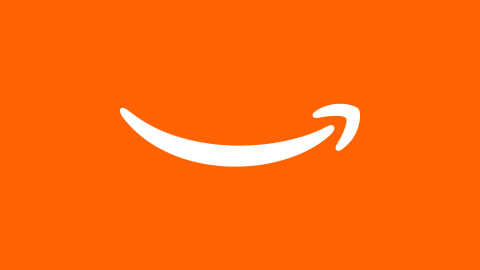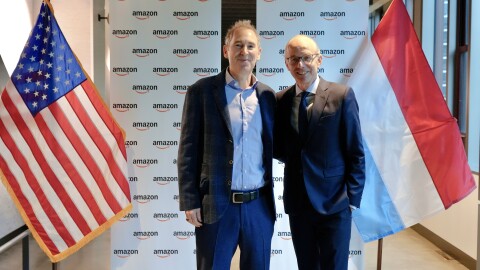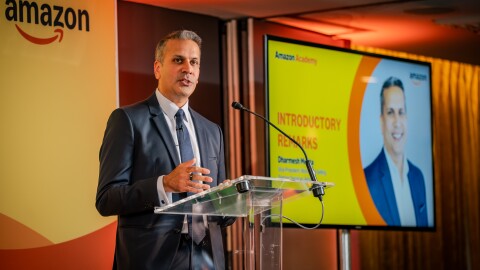Thank you, Commissioner Breton, for inviting us to participate in this high-level roundtable, and for the opportunity to share our views with the European Commission on best practices and further actions needed to reinforce the fight against counterfeits.
Amazon is known for its customer obsession, and a critical part of that is earning and maintaining our customers’ trust. Today, we and our millions of selling partners – the vast majority of which are small and medium-sized businesses – serve hundreds of millions of customers worldwide. Our customers expect that when they purchase an item in our store, they will receive an authentic product. If something goes wrong, customers can be confident they will always be taken care of.
I will focus my remarks on three areas which correspond to the main pillars of our anti-counterfeiting strategy: prevention, holding counterfeiters to account, and information sharing.
Prevention is key. We seek to deter bad actors from getting access to our store and to prevent counterfeit products from ever being listed on our store. One way we do that is through our in-person verification program which requires new sellers to meet 1-on-1 with an Amazon team member to verify their identity before they can sell in our stores in the EU, US, UK, Canada, Japan, and several other stores. We are continually focused on improving our proactive brand protections based on advanced technology like machine learning, as well as expert human review.
These initiatives, coupled with our efforts to hold bad actors accountable, have been effective in keeping infringing products from entering our store. For example, in 2021, Amazon stopped over 2.5 million attempts by bad actors seeking to create new selling accounts, preventing them from offering even a single infringing product for sale to customers shopping in our store, and we blocked over 4 billion bad listings before they were published for sale. And we continually scan our store for potential infringement. In 2021, Amazon’s technology scanned more than 8 billion attempted changes to product detail pages every day for signs of potential abuse.
Our dedication to protecting consumers and our store includes partnering deeply with a large and ever-growing number of brands, which is leading to continued growth in the adoption and efficacy of our brand protection tools. These tools continue to reduce the number of infringing products that brands find and have to report to us. In 2021, Brand Registry grew to include over 700,000 active brands, an increase of 40% from the prior year. At the same time, the average number of valid notices of infringement submitted by a brand in Brand Registry decreased by 25% from the prior year, and several brands have reported zero counterfeit product listings in the last KPI exercise at the end of 2021, organized as part of the EU Memorandum on the Sale of Counterfeit Products.
Importantly, we continue to focus on working with brands and our law enforcement partners to hold counterfeiters accountable. Our goal is not only stopping these criminals from abusing our store, but to take action to stop them everywhere. Amazon’s Counterfeit Crimes Unit (CCU), has sued or referred for investigation over 600 criminals in the EU, US, UK, and China. In addition, we are working to ensure that counterfeit products we identify do not make their way back into the supply chain. In 2021, Amazon identified, seized, and appropriately disposed of more than 3 million counterfeit products, preventing them from harming customers or being resold elsewhere in the retail supply chain.
In 2021, in the EU, we collaborated on anti-counterfeiting with Europol, Guardia Civil in Spain, Guardia Di Finanza in Italy, and Germany’s regional police services, as well as French, Belgian, German and Czech Customs agencies. Overall, we believe that we have to continue to make bold changes in how we collaborate with private and public sector partners to stop counterfeiters.
We are excited about the potential for the commission to help drive cross industry data sharing as part of the Toolbox. Amazon knows first-hand how powerful these collaborations can be, given our work with brands, with associations, and with law enforcement agencies like the US Patent and Trademark office (USPTO). Amazon directly ingests information from the USPTO to ensure that fraudulent trademarks are not used by sellers to enroll in Brand Registry. We then leverage this information to surface signs of potential abuse within our stores. Similarly, Amazon shares information regarding abusive trends within our stores with the USPTO to support their investigation of potential fraud by their applicants and registrants. The channel of communication is a win-win – the USPTO is able to improve the quality of its information, and Amazon is able to improve the accuracy of Brand Registry.
Finally, building on our learning and progress in protecting our store, we published a Blueprint for public and private sector partnership to stop counterfeiters. This included the need to better protect our borders from counterfeit goods, shut down confirmed counterfeiters across the retail industry, and increase resources for law enforcement to pursue and prosecute individuals trafficking in counterfeits.
It is still early in this journey but we are excited that the Blueprint has helped spark productive dialogue with others and we see the ambitions of the Toolbox and IP action plan as having similar ambitions and focus.
While we are proud of the progress we have made so far, we know there is more to do. We look forward to working further with you, your team and others around this table and beyond. We know that we can all be more effective fighting counterfeits together, and we’re committed to doing just that.
Thank you again for this opportunity, and for your attention.











